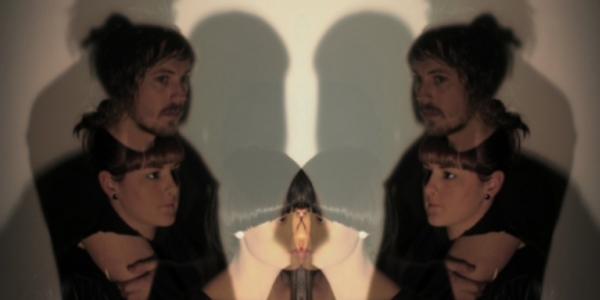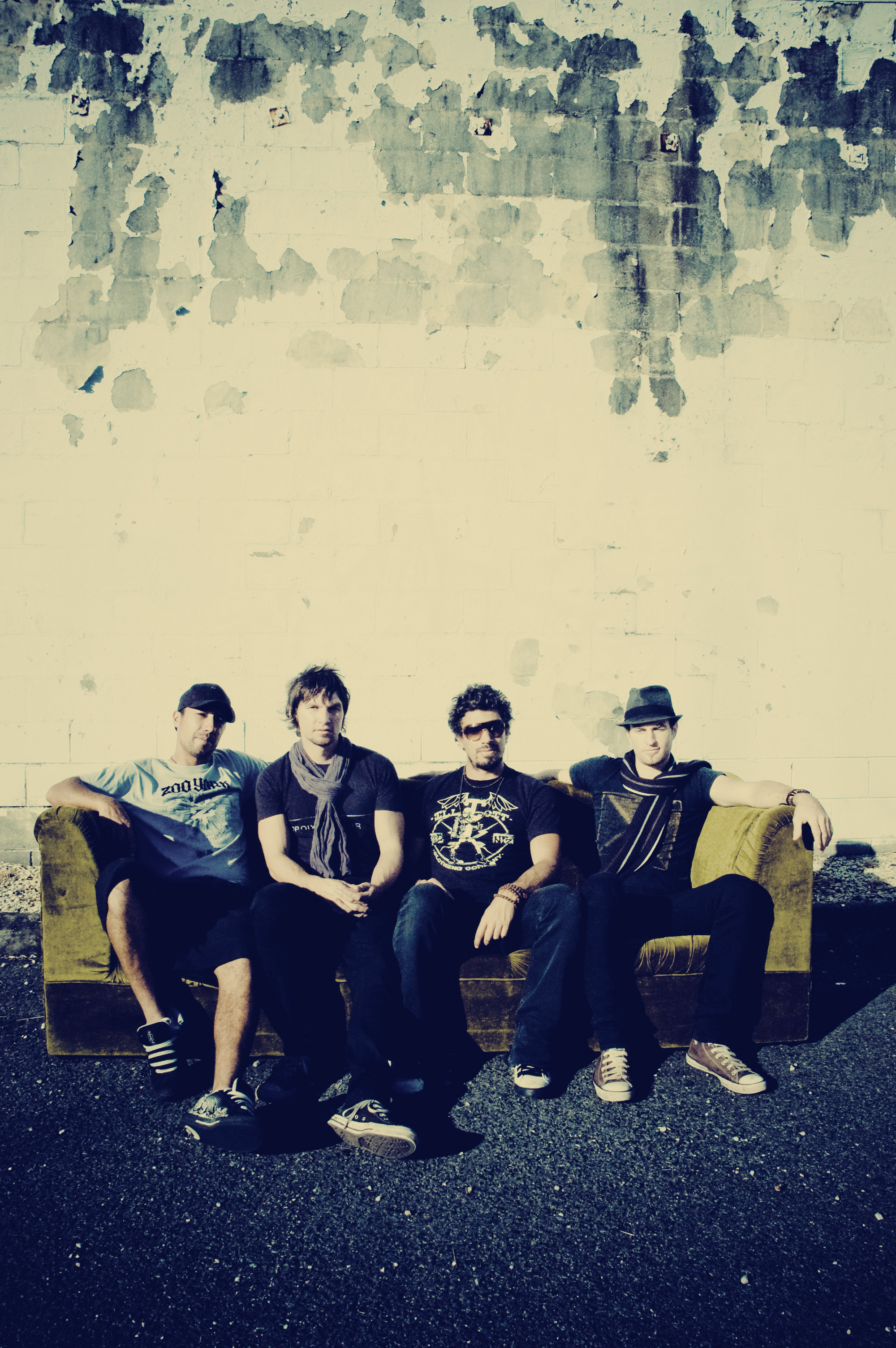Samantha Arthur [drums], Jessica Njoo [synths] and Paul Satur [lead vocals/bass guitar] met in 2008, while working at neighbouring restaurants in Prahran. “We ended up developing a habit of ‘over-cooking’ the food we had at our respective shops, and then ‘trading’ it, so we could all have epic banquets,” Satur reveals.
“In the weeks that would follow, we got chatting and realized we had similar ideas and a few common interests. We hadn’t had a lot of experience up until that point. I had played in a few punk and alternative bands prior, and Sam had spent some time in an indie band. At that time there was really only a hardcore/metal scene where I was living, and while this was great, I remember just wanting to do something that was a step away from that. Jess and Sam, having both spent time in orchestral bands, were also keen to branch into something more experimental.”
With each member’s varied tastes in music and previous experience, These Patterns can’t be easily pigeon-holed into any one particular style. “Sam has always been into a lot of jazz and soul, particularly the drum tones and patterns that stem from that music; as well as a lot of timpani and world music sort of drumming. Jess has always been into the contemporary stuff like Jeff Buckley and Morrissey, and has learnt classical piano – so there are some undeniable influences there, where comparatively I’ve grown up on a lot of punk/hardcore and stoner bands, like the Dead Kennedys, Kyuss, Operation Ivy and so on.
“When faced with the question of what kind of music we play, we generally go with the ‘post-punk’ banner,” Satur continues. “Not only are we all into a lot of the bands that fall under that bracket, but we’re much like the earlier bands that fall under that name. We don’t necessarily adhere to the traditional punk sounds and style, but still possess some of the ethos that came from it. For example, we are heavily into the DIY side of it all, and all pretty environmentally and socially conscious, and these are both big parts of our music and what we do.”
Satur enthusiastically responds to my mention of their live shows, which are pretty primal affairs; there’s a lot of energy and guttural passion on display on the stage. I’m reminded of the small, intimate shows of the late 1970s – as Satur stated earlier, there’s that DIY attitude coming through loud and clear. So, what’s the residency at the Toff In Town going to be like, especially since they’re sharing the stage with a veritable hodgepodge of local musicians and visual artists?
“We’re super-stoked with how it’s all turned out,” Satur gushes. “We really wanted to get together and play a few shows with some of our favourite bands and artists from around town, with the idea to create a series of nights that were visually and sonically unique from one another yet had depth and diversity as a common element. We initially weren’t sure how it would go, we had a list of bands we were loving at the time, although we hadn’t necessarily had too much to do with them up until that point. The first handful we spoke to though were really up for it, so we’re lucky.
“We wanted to make a big night of each of the weeks, and were trying to get as many of the bands and artists we liked involved as we could. We also had a few other friends pursuing their own creative interests and wanted to get them on board as well, so we’ve managed to get some great DJs and visual artists to join us each week, which should make for some pretty epic vibes.”
Their debut EP, Species, will be showcased on these four Tuesdays. Full of droning synths, tribal drums, scraping rhythms, and Satur’s borderline-menacing howls, Species brings to my mind’s eye an image of imperceptibly fragile glass baubles being sucked into and then destroyed by an interstellar vacuum cleaner. I asked Satur about his thoughts of the record, and how it came together.
“Species is our first release; we had been playing live for over a year by that stage and at the time we were beginning to write with more consistency and had established a handful of songs that were a good reflection of what we had been working towards over the last two years,” he explains. “We didn’t want to put out anything that we’d end up hating, had completely steered away from, or not be able to relate to a year on, so it was important that we were at that stage before we could work on anything like this.
“There’s a lot that went into it, a bit of experimentation and soundscape-y stuff, some more heavy psych, desert and garage-y elements and some more aggressive post-punk and prog sort of stuff at times as well – it’s kind of like a fruit salad!”

